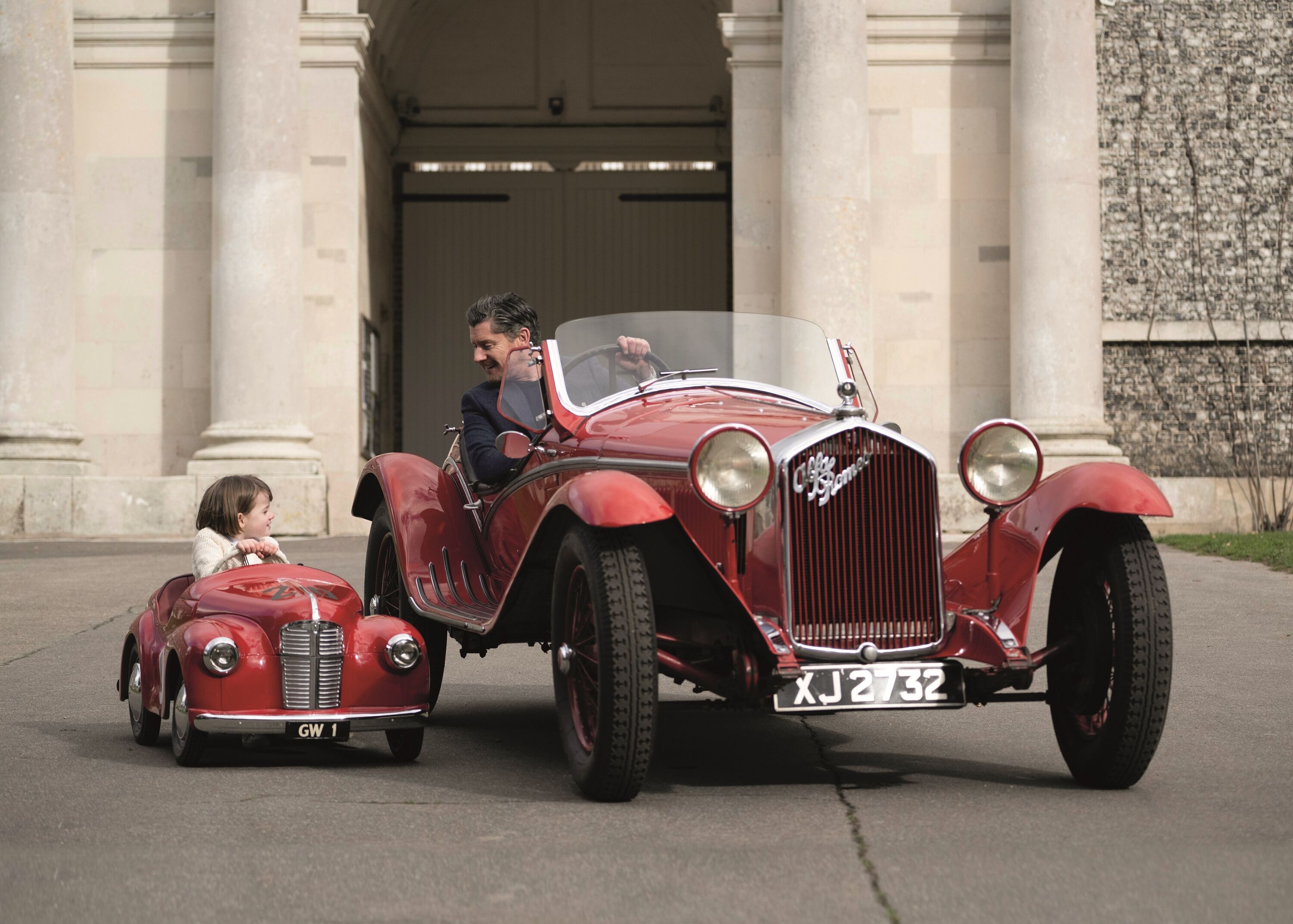Inside a 1,150hp Dakar Truck
It’s not often that you get to climb into a Dakar truck with a five-time Rally winner. In fact, this was time one of one for me, and despite his accomplishments, trepidation began to set in when Eduard Nikolaev announced matter-of-factly that if he didn’t crash, he wasn’t trying hard enough.

Unfortunately – or luckily, depending on how you look at it – I wasn’t going anywhere with the Russian driver. In fact, the closest I got to experiencing his 1,150hp Kamaz-master beast in action was when he turned on the fans to dissipate the stifling stuffiness in the salami-smelling cab. The smell was one of unfaltering perseverance, conjuring up images of the 65-degree-celcius heat that the crews have to contend with in vast expanses of desert tundra. The fans were by far the least impressive pieces of kit in the cabin, but no doubt one of the most vital in keeping Nikolaev, his navigator Evgenii Iakovlev and mechanic Vladimir Rybakov cool, calm and composed – all vital traits in the rally game.

Inspired by his father, a six-time national buggy racing champion, Eduard began karting at the age of 11, before working his way up to the Russian Championship podium, and first entering Dakar in 2006. He took his first win as a mechanic for Vladimir Chagin in 2010, and that same year had his first taste of driving in the Silk Way Rally, which he won. The 34-year-old took his first Dakar win as a driver in 2013, and has achieved three consecutive wins since 2017. Throughout his career, he has always raced in Kamaz trucks, and holds a strong allegiance to the manufacturer with which he shares a hometown

Sat in Nikolaev’s bucket seat, I was faced with a bank of buttons, dials and switches – what I can only image the inside of a 1980's Soviet tank would look like. Each was mysteriously labelled in Cyrillic Russian, and having not yet got to the Duolingo lesson on engine pressure and intercoolers, it was entirely alien to me.
“These dials are for the mechanic to monitor the tyre pressure in all four wheels, and adjust it on the go if required, and at the same time to monitor the engine temperature,” he explained through a translator.
“In sand the tyres should be 1 bar and on the normal road it could be up to 6 bars.”
“The four flappy paddles on the steering wheel are for stabilisation, to make suspension adjustments for each wheel, because when you race you need to make constantly make different adjustments, for off-road and on sand.”

The suspension he speaks of are huge Reiger shock absorbers. Two shocks are located at each corner of the truck, with the Dutch-built devices expected to withstand hundreds of kilometres of constant pounding on each stage.
“The steering wheel buttons are for the cruise control, and scrolling through the monitor options,” he said pointing to the little screen behind the wheel, a screen which also features in front of the mechanic, who sits staggered between the driver and navigator.
“During the race the mechanic works from the computer, because it’s very bumpy in the cabin and the pilot needs to focus on driving,” he explained. “But in the showcase or when the pilot drives alone they need it to be able to check everything on the tablet.”
“The mechanic also helps the co-driver with navigation, and we use helmets with microphones in to talk to each other – you couldn’t talk without a helmet.”

A telltale symbol on a pair of buttons caught my eye. “You can decouple the front and rear diffs while driving,” nodded Nikolaev. “Every system works while driving and you can switch and adjust everything on the go.”
Everything in the cabin has a purpose, from the various tool pouches to the reversing camera, because “the wing mirrors always get smashed off”. Dash trim was apparently surplus to requirement, with handfuls of exposed wiring snaking around the cab.

Comfort in the Kamaz is far from a priority, instead the constricting bucket seats, three-point harnesses and thick roll cage are there to protect the crew in the event of a roll, which happens more often than you would think. Which takes me back to Nikolaev’s blasé comment. Did he crash often, I dared to ask?
“In practice we rolled over. It was scary, but everything went well.”
“But the scariest thing,” he added sombrely, “is to lose when you make a mistake – when you’re leading and taken out by a crash.”
The truck’s exterior is just as utilitarian as the cab, from the rough-looking welds on the steel chassis and drive shaft to the easily-replaceable aluminium panel construction. The huge wheels reached my chest and the knobbly tyres measured wider than my shoulders. Two spare wheels are mounted at the rear of the truck, and despite weighing a huge 150kg each, it takes the team just 6 and a half minutes to change one.

Even the name, the Kamaz Bonnet Truck, is purposeful, denoting the truck’s protruding nose, which is at odds to the flat-faced vehicles usually seen in rally raids.
This bonnet allows a 50:50 weight distribution of its 9.5-ton mass over the front and rear axles, as opposed to 60 in front and 40 at the back usually seen. This serves to improve balance, and lessen the likelihood of rolling nose first over the peak of a dune.
“You can also have more speed on snake roads, and other terrain in the race, because of the 50:50 balance,” Nikolaev explained.

It’s an imposing beast for sure, and the appearance is matched by a menacing growl from its huge diesel engine. The turbo-charged 13-litre, six-cylinder Dongfeng Cummins engine, with a switchable intercooler, puts out an enormous 1,150hp, and drinks anything between 100 to 200 litres per 100km – 100 on piste, 200 on sand. Thanks to a 1,000-litre fuel tank situated directly over the rear wheels it can manage a range of anything between 500 to 1,000km, depending on the driving conditions.

The water-cooled engine is mated to a six-speed automatic Allison gearbox, with a vital manual mode allowing the driver to shift to suit the route surface. Rally regulations limit the trucks to a top speed of 140km/h (87mph), but the beast has the capacity to go far faster, Nikolaev promises.
Despite having been built in 2015, the Bonnet truck is still in development, and has yet to compete in the Dakar. The truck in its current incarnation raced Russia’s Silk Way Rally in 2017 and ‘18, while the same engine, in a different Kamaz shell, came first and second place in the truck class in Dakar 2019.
With the Dakar moving to Saudi Arabia for 2020, the Kamaz team are preparing for a world of new challenges. With the Bonnet Truck not expected to make its Dakar debut until 2021, Nikolaev and his crew will be competing in a similar truck to this year, albeit with revised internals.

With unchartered territory ahead – teams are not allowed to test in situ ahead of the rally – were they nervous, I asked? “Saudi Arabia will be absolutely new for the team because nobody has ever raced there before,” Nikolaev said. “We will undertake tests in another country in the same region, with similar surroundings, but the race will be a big surprise and something new for everyone.”
“The main thing is experience here. The team will prepare well, with off road tests, snake runs and sand and racing under different conditions, all experience that we could use later in the race.
“But everybody is excited about it because new is always interesting and a new challenge is the best way to can move forward the team’s technology.”
Photography by Pete Summers.
FOS
FOS 2019
Dakar
Kamaz-Master Team
Kamaz Truck
Bonnet Truck
2019

Modern
Your guide to the 2020 Dakar Rally

Festival of Speed
Video: Mad Mike’s drift Huracan v. Dakar Kamaz Truck

Festival of Speed
Video: Wild drifting by the Kamaz Dakar Truck


